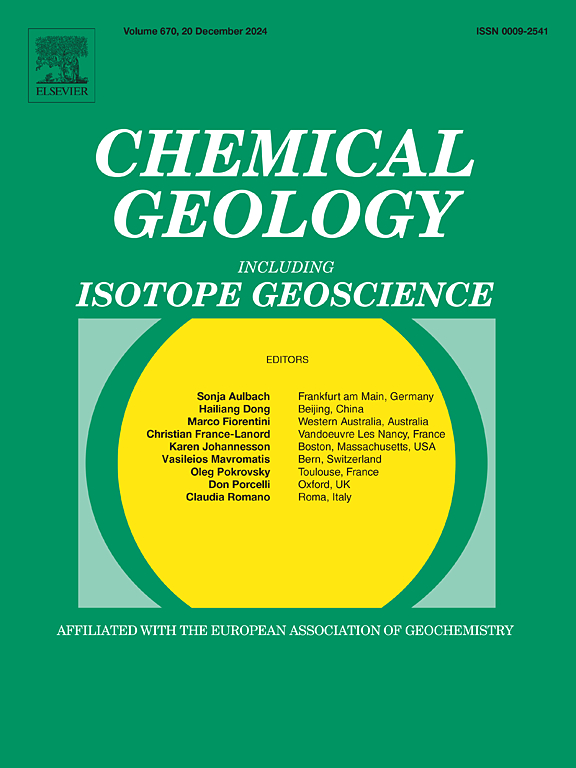Could rear-arc volcanism be driven by mantle instability?
IF 3.6
2区 地球科学
Q1 GEOCHEMISTRY & GEOPHYSICS
引用次数: 0
Abstract
The drivers of rear-arc volcanism remain poorly understood. Taranaki volcano, in the North Island of New Zealand, offers an ideal location to investigate the causes of such volcanism. Taranaki erupts hydrous, amphibole-bearing, high-K calc-alkaline magmas with trace element and Sr-Nd-O isotope compositions characteristic of arc-like fluid-flux melting regimes. Its location 150 km behind the arc front and >250 km above the subducting slab, however, has led some geodynamic models to consider convective removal of lithosphere as an alternative driver of magmatic activity. Unlike typical arc magmas, late Pleistocene-Holocene eruptives from Taranaki preserve up to 40 % excesses of 230Th over 238U. These cannot be explained by crystal fractionation or assimilation processes and are unlikely to be imparted by sediment melting at the slab interface. We present a geochemical case to hypothesise that Taranaki magmas result from mantle instability associated with convective removal of lithosphere. In this model magmas represent variable mixtures of asthenospheric melts resulting from decompression melting with melts from downwelling lithosphere that have arc-like trace element signatures inherited from past (Miocene) metasomatism. Calculated upwelling rates for the asthenospheric component are similar to surface uplift and the timescales from melting to eruption must be less than 5 kyr, similar to eruptive periodicity. High-K rear-arc magmas with 230Th-excesses are common globally (e.g., Stromboli, Sangeang Api, Rishiri) suggesting mantle instability could be a more common scenario to explain rear-arc volcanism.
求助全文
约1分钟内获得全文
求助全文
来源期刊

Chemical Geology
地学-地球化学与地球物理
CiteScore
7.20
自引率
10.30%
发文量
374
审稿时长
3.6 months
期刊介绍:
Chemical Geology is an international journal that publishes original research papers on isotopic and elemental geochemistry, geochronology and cosmochemistry.
The Journal focuses on chemical processes in igneous, metamorphic, and sedimentary petrology, low- and high-temperature aqueous solutions, biogeochemistry, the environment and cosmochemistry.
Papers that are field, experimentally, or computationally based are appropriate if they are of broad international interest. The Journal generally does not publish papers that are primarily of regional or local interest, or which are primarily focused on remediation and applied geochemistry.
The Journal also welcomes innovative papers dealing with significant analytical advances that are of wide interest in the community and extend significantly beyond the scope of what would be included in the methods section of a standard research paper.
 求助内容:
求助内容: 应助结果提醒方式:
应助结果提醒方式:


